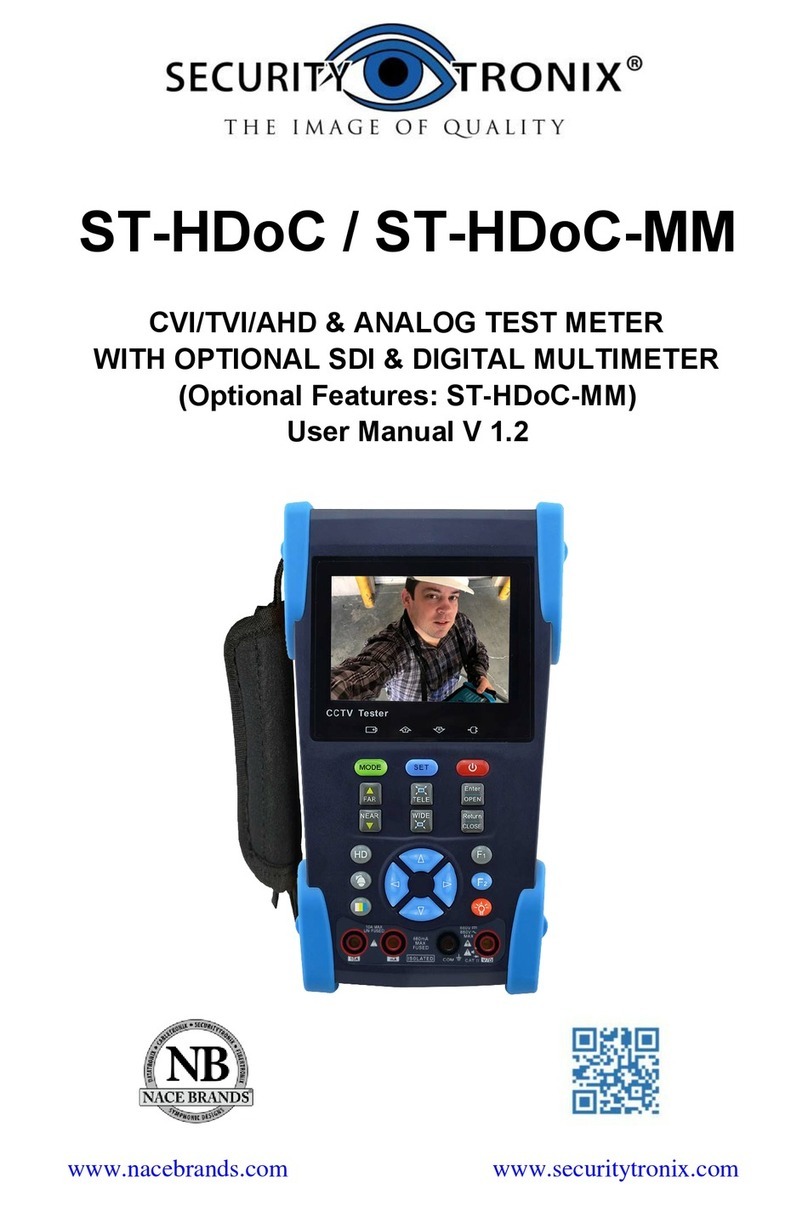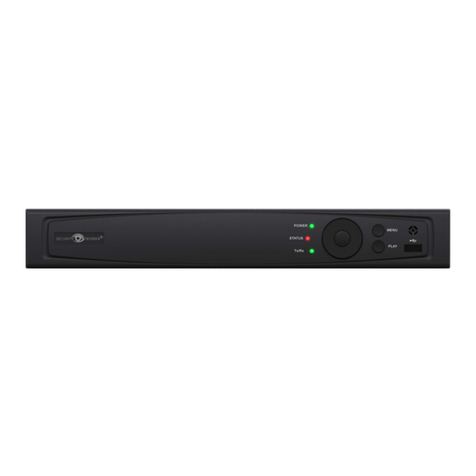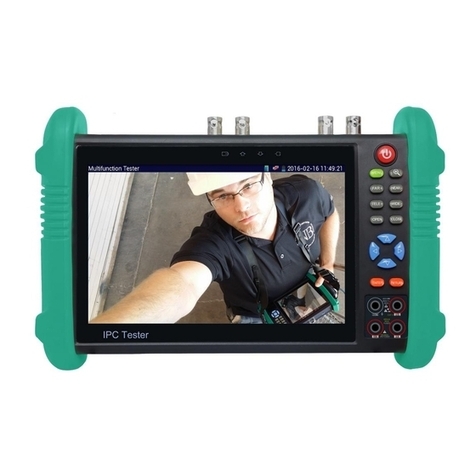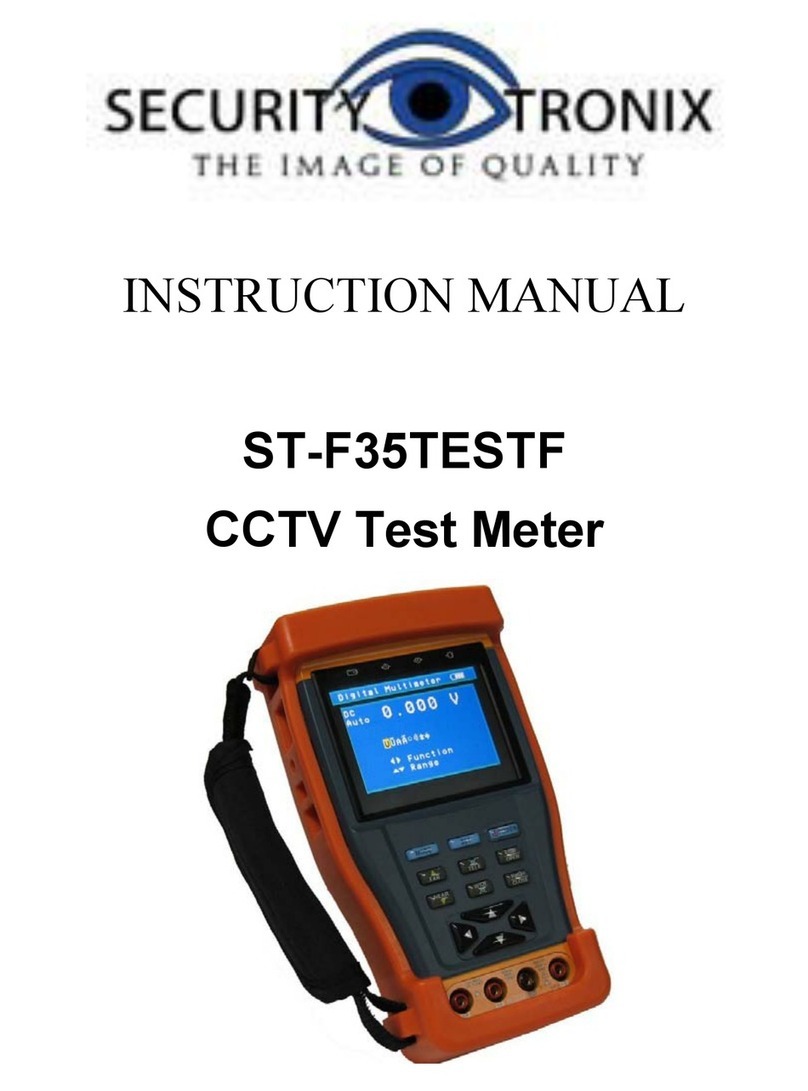
Table of Contents
1. Safety information......................................................................................................................1
2. IP BUDDY+ Introduction .........................................................................................................1
2.1 General..........................................................................................................................................1
2.2 Features........................................................................................................................................1
2.3 Function .......................................................................................................................................2
2.3.1 Touch screen and OSD menu .................................................................................2
2.3.2 IP camera test................................................................................................................2
2.3.3 Analog camera test......................................................................................................2
2.3.4 Video level meter.........................................................................................................2
2.3.5 PTZ controller (Activates analog video viewing and testing)................3
2.3.6 Enhanced Color bar generator..............................................................................3
2.3.7 12VDC 2A/5VDC 2A output power.....................................................................3
2.3.8 Audio testing..................................................................................................................3
2.3.9 Cable tester.....................................................................................................................4
2.3.10 PTZ data analysis ......................................................................................................4
2.3.11 Digital Image zoom on the monitor .................................................................4
2.3.12 Video screen shot, record and playback........................................................4
2.3.13 DHCP dynamic address assignment ................................................................4
2.3.14 Access the dynamic IP address ..........................................................................4
2.3.15 Multiple network IP Cameras Test...................................................................4
2.3.16 IP address scan ..........................................................................................................4
2.3.17 PING Test ......................................................................................................................4
2.3.18 Port flashing ................................................................................................................4
2.3.19 PoE Test.........................................................................................................................4
2.3.20 LED flashlight..............................................................................................................4
2.3.21 WIFI.................................................................................................................................5
2.3.22 PoE power supply.....................................................................................................5
2.3.23 HDMI signal output..................................................................................................5
2.3.24 Network bandwidth testing.................................................................................5
2.3.25 Cable Search ................................................................................................................5
2.3.26 Screen display rotates in 180 angle .................................................................5
2.3.27 FTP Server....................................................................................................................5
2.4 Packing list..................................................................................................................................6
2.5 Operational buttons and description of connections.............................................7
3. Operation.....................................................................................................................................9
3.1 Installing the Battery .............................................................................................................9
3.2 Instrument connection..........................................................................................................9
3.2.1 IP camera connection.........................................................................................................9
3.2.2 Analog camera test...........................................................................................................10































